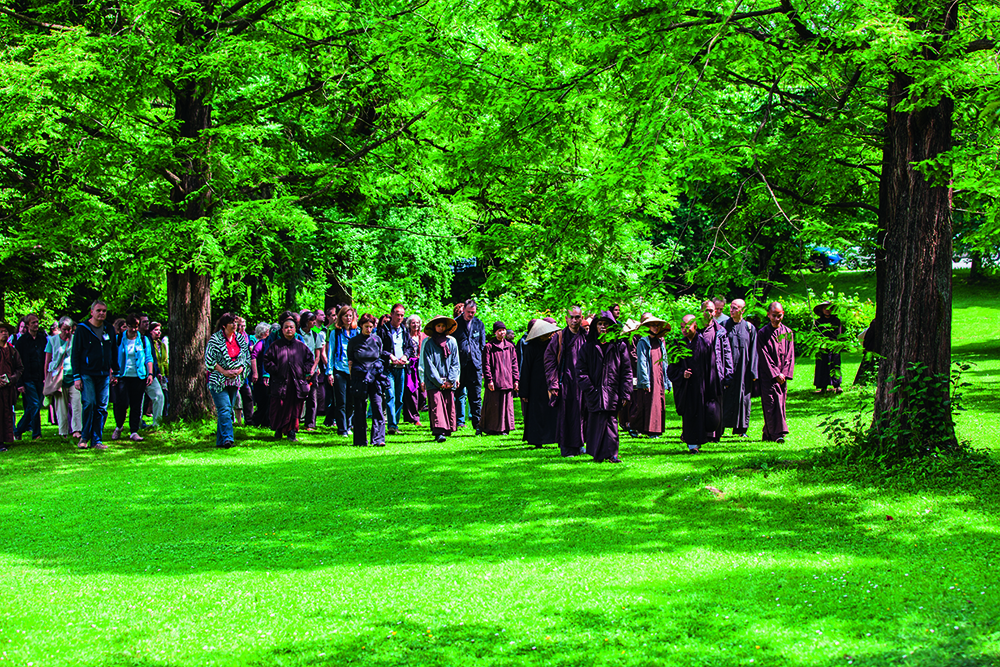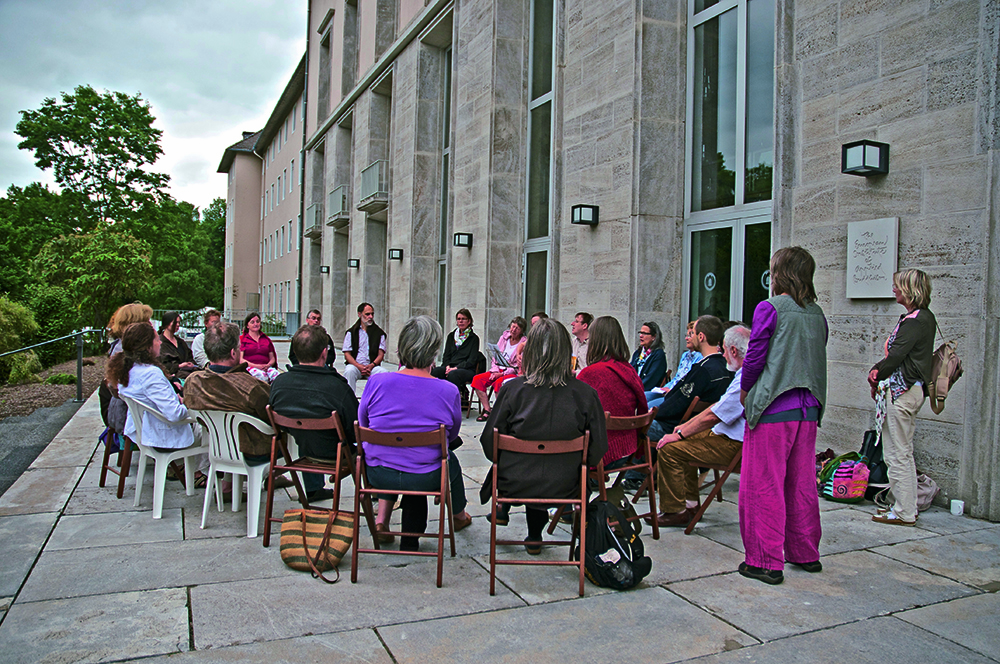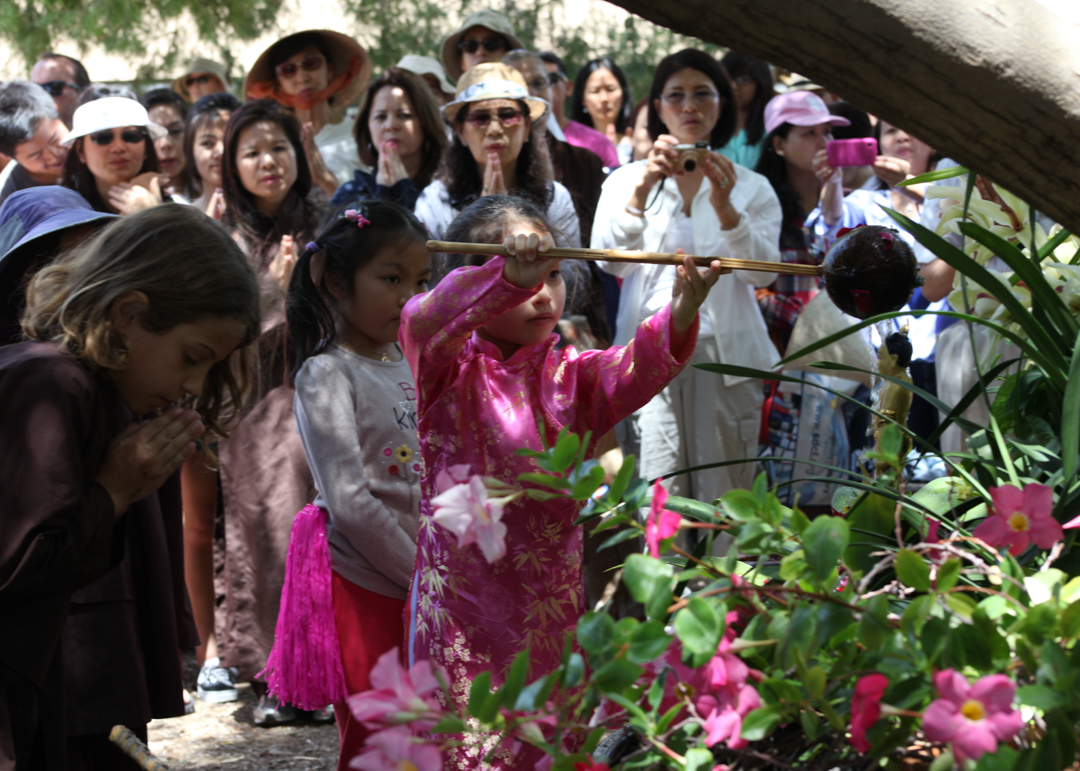By Axel Denecke

Through mere coincidence I came across the history of Waldbröl and the former Kraft durch Freude (KdF) Hotel, which is now the EIAB (European Institute of Applied Buddhism). In search of material about the period of National Socialism in the university library, I came across a book about the “Stadt der Volkstraktorenwerke” (city of the people’s tractor factories). This unique scientific publication documents the work of Robert Ley,
By Axel Denecke

Through mere coincidence I came across the history of Waldbröl and the former Kraft durch Freude (KdF) Hotel, which is now the EIAB (European Institute of Applied Buddhism). In search of material about the period of National Socialism in the university library, I came across a book about the “Stadt der Volkstraktorenwerke” (city of the people’s tractor factories). This unique scientific publication documents the work of Robert Ley, who––as an organisational manager of the NSDAP (Nazi Party) and leader of the German WorkFront DAF––wanted to change Waldbröl to an industrial city with a gigantic tractor factory, an Adolf-Hitler-School, and the KdF-Hotel.
AN UNLIKELY HOME
In contrast to other big projects, like the Ordensburg Vogelsang in the Eifel Region, only a small number of these National Socialist plans became reality in Waldbröl. Curious to see the few remaining traces of Robert Ley’s policies, I travelled to the small town of Waldbröl for the first time nearly two years ago. I found myself in front of the imposing entrance gate and looked in vain for any clues about the history of the house. Here, I encountered for the first time the initials of the EIAB. It seemed to me like an irony of history that a Buddhist practise centre would find a home in, of all places, this old Nazi building with its bombastic interior of marble and mosaics and its forbidding facade.
Later, I studied the EIAB website and was surprised at the variety of activities and events displayed there, so very contrary to the historical spirit of this house. I asked myself how it could be possible to practice Buddhist mindfulness in such a building.

Many more months passed before I got my answer. I finally received a contract from Deutschland Radio to make a documentary about Waldbröl, its Nazi history, and the EIAB.
In spring 2014 I immersed myself in this topic, curious about who actually lives in the EIAB, what life is like there and who the guests are. How would the personal experiences of nuns, monks, and guests mix with the aura of this history? So, for a few days in April I moved into one of the rooms of the former KdF-Hotel. Furnished in the style of the 1930s, it had just a sink, a wardrobe, and a view of the park.
A MEETING OF PAST AND PRESENT
I entered two worlds at the same time. On one hand, the ordinary, bustling life of Waldbröl: where youngsters would meet to chill out in the evenings on the so-called “Hitler-wall”––the foundation of the planned and never finished Adolf-Hitler-School; the colourful market, where everybody goes to buy groceries; the traffic that slowly winds through the city. On the other hand, the EIAB with its beautiful Stupa, the garden around the former KdF-Hotel, the meditation halls, dining hall, orchards, and a quiet, monastic life.
The fundamental difference was of course the people, in particular the monastic sisters and brothers I met there––especially Sister Song Nghiem, who was at my side every day especially helping with the interviews. She explained the history of the house with great animation and I realized what an act of strength it must have been to counteract the spirit of the house. The halls of the main building especially still seem to be so cool and forbidding. “Inner beauty is more important than outer beauty,” Sister Song said.
I was particularly impressed by the ceremony for the victims of the house: seven hundred patients of the former hospital had to leave to make space for the KdF-Hotel and were relocated or killed. Every day a special altar in the entrance hall is decorated with offerings and songs are chanted. Where in Germany is there another place where the victims of National Socialism are remembered every day?
This particular form of remembrance by the monastics is somewhat alien and exotic to the Western spirit. The inclusion of the perpetrators in the ceremony for the victims also seemed strange to me, not fully comprehensible in a land where absolution for the Nazi perpetrator is still a topic today.
HISTORY'S LESSONS INSPIRE A HOPEFUL FUTURE
However it is most important to me that the history of this building is finally being seen and contemplated. Countless sites of National Socialism in Germany are surrounded with an aura of helplessness as these memorials continue to remind us of our painful past. The establishment of the EIAB in the old KdF-Hotel in Waldbröl has opened a new page.
Strangely, the darkness of history does not dominate the character of the EIAB. Whoever experiences the joy of the brothers and sisters, and sees their delightful manner of conducting daily tasks in the kitchen and garden, realizes that even in such a place history does not hold all the power. Though silence is an important part of life in the EIAB and takes some adjustment, for me it was a wonderful experience to watch the sisters and brothers gather during the warm spring evenings for volleyball or table tennis and listen to their laughter and shouts fill the air.
From what I learned during my visit, the history of the EIAB is only of secondary importance for its visitors. They come to Waldbröl to practice mindfulness and meditation. And yet they always encounter the history of the house, a past filled with violence.
Here in Waldbröl, the violence of the past meets with the peace of present monastic life and these are perfect conditions to meditate on how violence arises and how it can be overcome, how non-discrimination can be born from discrimination. The students of the Gesamtschule (comprehensive school) Waldbröl, whom the sisters visit regularly, have understood this principle. When I asked whether the EIAB and the nuns and monks fit in well in Waldbröl, one of the girls said: “Of course, because somehow every person can belong to every place, right?!”
Axel Denecke is a freelance journalist for Deutschland Radio.
Reprinted from EIAB Newsletter, August 2014

